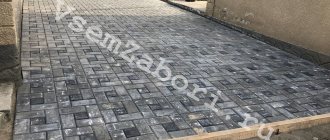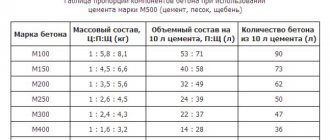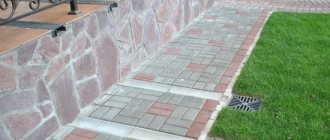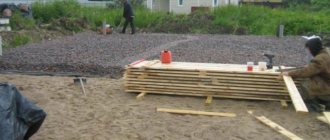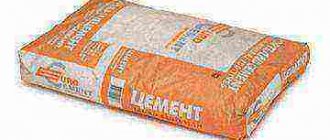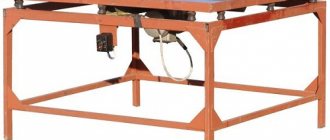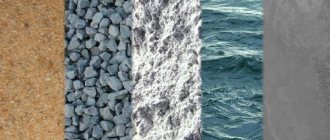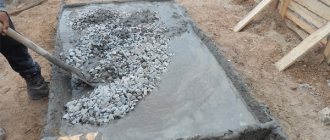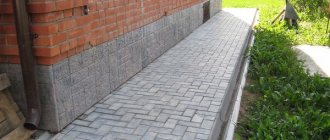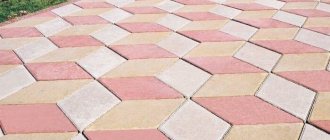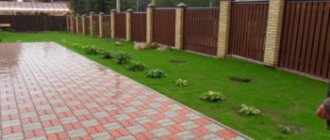Types of vibrating plates
Vibrating plates are mainly divided into categories according to the type of power supply:
- Gasoline. The models are considered optimal in quality and price, demonstrate good performance and low noise levels.
Suitable for refueling gasoline vibratory plates, including low octane fuels
- Diesel. Fuel for such models is cheap, but the units themselves are quite expensive, and they also cannot operate at low temperatures.
Diesel vibrating plates make a lot of noise when working - Electrical. Vibrating plates of this type are the cheapest, but they only work close to the power grid and have low power.
Electric vibrating plates do not produce emissions and are suitable for indoor use
When purchasing a unit, you need to take into account the scale of the work, its complexity and how often the equipment is required.
Types of vibratory rammers for soil compaction
The main classification of such equipment is based on the type of driving device. It could be:
- electric motor;
- gasoline internal combustion engine;
- diesel.
Electric vibrating rammer for soil compaction
– the equipment, although not very powerful, is mobile and low noise. The engine operating frequency is up to 600 rpm, which makes it possible to work out 250 “squares” per hour. Additional advantages of electric models are environmental friendliness, budget cost, and the ability to work indoors. The disadvantages include the mandatory presence of a power source nearby.
Diesel powered installation
capable of delivering up to 700 rpm, which allows you to compact more than 250 square meters of soil. Diesel equipment is productive, durable and economical, but it is expensive and noisy.
Vibratory rammers with a gasoline engine are the most popular.
With a speed of up to 680 rpm, they are capable of processing about 200 square meters. Such equipment is not tied to power supply, has low noise levels, and is unpretentious to temperature changes. But you can only work on it in open space (due to toxic gasoline fumes).
Gasoline vibratory rammer for soil compaction - device
How to choose a vibrating plate
The choice of a specific model depends primarily on the specifics of the upcoming work. It is necessary to determine what kind of material is to be compacted and to what depth.
Which vibrating plate is better - gasoline or electric?
In terms of cost, electric units remain the most affordable. But their performance is low, on average up to 2200 W, and besides, the equipment must be provided with access to an outlet. The main advantage of such models is that during operation you do not have to spend money on fuel.
Gasoline devices are more expensive and require regular refilling with liquid fuel. But they are completely autonomous, and with their help you can compact soil, crushed stone and asphalt. Choosing an electric or gasoline vibrating plate depends on the specifics of the work, but the range of applications is wider for liquid fuel models.
How to choose a slab for soil compaction
For compacting soil, asphalt and backfilling foundations, medium-heavy models weighing up to 220 kg are used. This technique compacts the material to a depth of 60 cm and is often used in road construction and repair.
Which vibrating plate to choose for crushed stone and sand
Light units up to 75 kg with a compaction depth of 15 cm work with sand, fine gravel and crushed stone. They are often used when choosing a vibrating plate for a summer house; the models are suitable for landscaping and backfilling garden paths.
How to choose a vibrating plate for laying paving slabs
Paving slabs are a rather fragile material that requires careful handling. It is laid using universal units weighing up to 110 kg with a compaction depth of up to 25 cm and an impact force of up to 12 kN.
Important! A vibrating plate for paving must be equipped with a rubber or polyurethane mat; it will reduce the destructive effects of vibration.
Working area of the plate
The performance of the unit depends on the size of the sole. In the garden, devices with a base of about 40 by 40 cm are usually used.
Reverse
Some models of vibrating plates are equipped with reverse - an option that allows you to start moving in the opposite direction. This feature is convenient when working in difficult terrain areas where heavy equipment may rest against a wall or other obstacle.
Irrigation system
If you plan to work with asphalt or bitumen, it is better to buy a vibrating plate with built-in irrigation. The sole of such models is automatically wetted with water, so viscous and sticky materials do not stick to it.
Which vibrating plate manufacturer is better to choose?
Vibrating plates on the construction market are represented by both foreign and domestic brands. Among the most reliable are:
- Weber;
- Mikasa;
- Shatal;
- Zitrek;
- Grost;
- Caliber;
- MISSOM;
- TCC;
- Impulse.
The listed manufacturers supply durable and high-quality professional-grade equipment in a wide range.
Compacting sand by hand
Tamping under the foundation is also possible manually. This is energy-intensive physical labor, which will require a lot of time and effort. However, if the goal is “compacting sand in small volumes,” then there is no need to call professional teams, whose services cost from fifteen dollars per square meter. You can even manually create a construction tool for sand - a masher. To do this, use a fairly wide wooden beam or steel plate. They can be either light (about 30 kg) or heavier (up to 80 kg). Naturally, manual tamping will not allow for deep compaction of the soil. This must be taken into account when choosing a method.
Tamping by hand can make it possible to make a special cushion for the screed, the main material of which is sand. It is imperative that tamping with water must be used first, taking into account the degree of moisture of the sand, otherwise all efforts may be in vain. Water is a necessary thing in this process; its volumes are important to control. For example, to compact the screed, you should pour a thin layer of sand (about 10-15 cm). Then water is applied in small quantities and then compaction is carried out to the desired depth.
There are many techniques that have made sand compaction a simple and straightforward process. Even a person with little knowledge of construction can participate in it. Vibrating plates and vibrating rammers are some of the most affordable devices for purchasing. They are optional items to purchase and can be rented in many places today. The price depends on the region, rental period and condition of the devices. For example, an average quality vibrating plate in Moscow will cost you two thousand rubles per day.
The abundance of equipment that differs in power, size, price, and ergonomics, of course, is pleasing to the eye, but still it will not allow achieving the same compaction as when using heavy tools.
The main criterion for assessing the quality of work is an indicator that is calculated by the ratio of the achieved soil density to its maximum compaction capability, determined using special GOST devices. The required value for building foundations depends on the project, but is often not lower than 0.98. This is a coefficient that has no size. Soil density control occurs thanks to field and stationary laboratories.
When erecting a structure or building on weak soils, it becomes necessary to artificially improve the properties of the foundations. Currently, various methods are used to improve the strength properties of soil. Surface soil compaction using a tamper has the greatest effect.
Sand compaction is one of the mechanical methods of soil compaction. It can also be called layer compaction. Unfortunately, it is not a universal method. The use of rammers in construction is limited due to the moisture content of the sand. The humidity level should be 0.7 or less. If you try to compact sand with high humidity, the process may reverse. This is observed due to decompaction as the pore water is hardly compressed.
Rating of gasoline vibrating plates up to 70 kg
Gasoline light units can be used for laying tiles in the country or compacting crushed stone. Such models are in high demand due to their versatility, although they can be quite expensive.
Mikasa MVH-R60E
The compact Japanese vibrating plate weighs 69 kg and is suitable for laying sand and asphalt. It has good performance and a power of 4.5 liters. s., equipped with a water tank. When interacting with a hot coating, it is prevented from sticking to the work surface.
The average cost of a Mikasa vibrating plate is 229,000 rubles
TSS WP50-L
The unit with an impact force of 8.2 kN compacts 20 cm. Suitable for laying loose and hard coatings in a summer cottage, it is equipped with a powerful four-stroke 2.8 hp engine. The weight of the device is only 54 kg.
You can buy TSS WP50-L from 20,000 rubles
Champion PC5332F
A linear vibratory plate with a compaction depth of 20 cm is capable of processing areas of 480 m2 per hour. It is operated manually, weighs only 43 kg and is suitable for working with tiles and loose coatings. It has compact dimensions, so it is easy to find a place for the unit in a garage or shed in the country.
The average price of a Champion vibrating plate is 21,000 rubles.
Making a manual tamper
There are many options for making a rammer with your own hands. Some people make massive structures entirely made of iron, but in this case welding will be required. Others prefer to make do with improvised materials. Let's consider the best option for manufacturing a manual tamper for compacting soil, sand and gravel.
To do this, you will need a standard square beam of 100 - 150 mm. It should not be rotten or flaking.
Healthy! Some use round logs, but with the help of such compactors it is impossible to fully compact the base in the corners.
You will also need to prepare:
- A steel plate with a thickness of at least 2 mm.
- A round stick about 450 mm long (it will serve as the handle of the future tamper). To do this, you can use an unnecessary shovel handle.
- Screws and wood glue.
Making blanks
We will prepare the structure according to the drawing shown below.
After preparing everything you need, saw off the ends of the timber at a right, even angle, according to the dimensions. After this, it is necessary to use a plane to level the plane of the lower end of the block and remove chamfers of about 5 mm from the edges of the workpiece.
To avoid getting numerous splinters during the work, it is recommended to sand and polish the surface of the block.
Making a “shoe”
The next stage of creating a tamping tool with your own hands is making a metal “shoe” from a sheet of steel. To cut the plate we use the following template.
Or, you can simply install the beam with its lower end on a sheet of metal and trace it with a pencil.
After this you need:
- Cut the workpiece, as in the picture, using special metal scissors or using a grinder.
- Remove metal burrs from the shoe. To do this, it is most convenient to clamp the workpiece in a vice and remove the excess with a file.
- Without removing the “shoe” from the vice, drill holes for the screws at the previously marked points.
- Clean the surface with sandpaper.
- Bend the “wings” of the workpiece and install the beam into the “shoe”. If the workpiece is a little wider, you need to knock out the “wings” with a hammer.
- Place the drill bit into the screw holes and drill through the wood at a slight angle.
- Secure the screws on all sides.
Installing the handle
Having retreated 100 mm from the upper edge of the block, it is necessary to mark the center of the future handle. To do this, you must first measure the diameter of the shovel handle. Let's say it is 36 mm. To prevent the handle from dangling, you need to use a drill whose diameter will be several mm smaller than the diameter of the handle. It should be taken into account that the outer part of the hole in the bar will be slightly larger than the internal diameter, so during the work process it is necessary to periodically insert the handle into the bar and check how tightly it fits.
If the handle does not fit into the hole, you should never try to hammer it in with a hammer. Otherwise, the timber may crack and making a rammer for earth, sand and gravel with your own hands will have to start all over again. It is much easier to slightly plan the cutting to the required diameter.
After the hole is ready, you need to apply glue to its walls and install the handle. Excess adhesive can be removed with a rag. In order for the handle to hold tightly, you need to fix it with a long screw, which must be screwed into one of the sides of the beam.
When the glue gains strength, you can begin to use the tamper. It is best to store a homemade tool in a dry place, or you can pre-paint the workpiece to make it last longer. If necessary, the steel nozzle can be easily replaced with a new one.
Rating of the best models of gasoline vibrating plates over 70 kg
Heavy and medium-weight aggregates are rarely used for decorative tiles. But they are well suited for compacting soil and crushed stone.
DDE VP80-CK
The 80 kg vibrating plate has a rigid frame and a reliable design that is resistant to vibrations. Suitable for landscaping and road laying, compacts soil up to 30 cm deep. Engine power is 6.5 liters. pp., and the only disadvantages include the lack of reverse motion.
The average price of a DDE VP80 vibrating plate is 33,000 rubles
Champion PC1645RH
Powerful 9 liter unit. With. with a mass of 161 kg it is capable of compacting material up to 50 cm in depth. It is used in both private and professional construction, equipped with forward motion and reverse. Starts manually, has low noise level.
You can buy a vibrating plate PC1645RH from 108,000 rubles
Zitrek CNP 25-2
The unit is suitable for working with bulk materials, supports forward and reverse motion, and has a power of 6.5 liters. With. The model is reliably protected from corrosion, easy to operate, and weighs 126 kg. The compaction depth for the unit is 30 cm.
You can purchase a Zitrek vibrating plate from 52,000 rubles
Operating principle of a vibrating ramming device
Different types of vibratory rammers have different vibration amplitudes and frequencies. Usually, when the first indicator is low, the last one is high, and vice versa. If the emphasis is on amplitude, the equipment is used for compacting loose soils. In the second case, the device is suitable for working with viscous compounds, for example, concrete.
The operating principle of such equipment is simple. Torque is transmitted from the motor to the “unbalance” shaft - the eccentric, also called the inertial element.
The latter is rigidly fixed to the tamping plate, which receives the energy. After this, the vibration passes to the ground, compacting it.
Almost all vibratory rammers for soil compaction operate in a forced oscillatory mode. To create it, you need a centrifugal vibration exciter. When the eccentric moves, a forced force is generated, which is the basis for the occurrence of vibration.
Rating of diesel vibrating plates
Diesel units have the highest power. They are expensive, so they are usually bought for landscaping spacious areas or for production purposes.
Wacker Neuson DPU 3050 H
A powerful professional plate with a productivity of more than 650 m2 per hour compacts soil 50 cm with an impact force of 30 kN. The unit is equipped with a reliable diesel engine with a fuel consumption of 0.6 liters, copes with any tasks and is used in the construction industry.
You can buy a Wacker Neuson diesel unit from 450,000 rubles
Zitrek CNP 330A-3 AES
An expensive but high-quality vibrating plate has a power of 13 hp. With. and impact force 40 kN. Compacts almost 1 m deep, ideal for laying bulk materials and asphalt. It is rarely used in the country, but for construction it is very convenient to buy a model.
The average cost of the Zitrek CNP 330A-3 vibrating plate is 200,000 rubles
Masalta MSH160R-1S
Device with a 4.3 liter diesel engine. With. allows you to compact soil in areas with difficult terrain, near curbs and streetlights. Suitable for preparing road surfaces. The impact force of the unit is 30 kN, the device is compact, despite the increased power.
You can purchase a Masalta vibrating plate from 134,000 rubles
Accents when purchasing
Anyone who decides to purchase vibratory ramming equipment should pay attention to the availability of:
- soles of different sizes included;
- chassis for ease of movement;
- special nozzles.
It is important that the device be equipped with handles to reduce vibration transmission to the operator's hands. Additional protection will be provided by purchasing anti-vibration gloves.
Despite the simplicity of the design, a vibratory rammer for soil compaction requires a responsible approach when working with it and compliance with safety regulations:
How to properly compact asphalt with a vibrating rammer
- The operator is only allowed to be behind the vibratory rammer.
- An electric vibrator for soil compaction requires periodic breaks, with simultaneous disconnection from the power grid.
- Do not run the machine on rocky surfaces to avoid damaging the sole.
- Don't forget to regularly clean the air filters on your vibrating rammer.
It is mandatory to use protective boots with metal-reinforced toes, glasses and gloves, and when working with a diesel device, headphones.
A deep vibratory rammer is not used when working with asphalt pavement or paving slabs - this can destroy them. Only a vibrating plate is suitable for such work.
Tamper for compacting soil, sand or gravel. Vibrating plates (rammers) are rightly called professional construction machines. They are used to compact the soil, lay asphalt, paving slabs, and also eliminate various defects and unevenness of the road surface.
Such a tool is quite simple to operate, but still, do not forget about standard safety precautions, as well as the peculiarities of performing work for different materials, such as sand, crushed stone, asphalt, tiles and “underlayment” under the floor.
What is it for?
Tamping, i.e. The vibrating plate consists of five main elements. This is the engine
, which can be gasoline, electric and diesel, and drives all the parts of the tool.
The belt drive
helps transfer torque from the engine to
the eccentric
. This, in turn, helps create vibration vibrations in order to perform compaction.
The impact on the treated surface is created using a base plate,
and everything can be controlled using
the operator handle.
The vibrating plate has a heavy and powerful base, which, together with vibration at high frequencies, allows for compaction of the surface. The efficiency of the work done will depend on the power of the device and the size of its electric or gasoline engine. In most models, the devices are quite maneuverable, and this makes it possible to perform tasks even on inconvenient and sometimes curved surface areas.
Application area
The pneumatic soil compactor was created to compact bulk materials using an oscillating motion. After the materials are poured onto the surface, their particles will not be located close enough to each other. To ensure that they fit as tightly as possible to each other, you should use a tamper. This will help change the load-bearing properties of some of the materials so that construction work can be carried out on this surface in the future. Compacting with a vibrating plate is used for a large number of construction areas.
It is especially often used for such cases:
In special cases, compaction is used to lay paving slabs and paving stones. This makes it possible to complete work several times faster.
Rating of the best electric vibrating plates by reliability
Although electric models are considered the least powerful, they are often purchased for personal use. The best units show good performance and do not require additional fuel costs.
Shatal PC-1443
The electrically driven device has a 3 liter motor. s., but demonstrates an impact force of 13.5 kN. Compacts over 20 m of soil per minute, copes well with hard and loose materials.
Attention! The advantages of the model include a vibration damping system, which reduces the risk of damage to the tiles during installation.
The average price of Shatal PC-1443 is 120,000 rubles
Stroymashservice IE-4509 A
An electric vibrating plate compacts surfaces up to a maximum of 20 cm. It consumes 250 W of energy and can be powered from a household outlet. With modest capabilities, it is well suited for use in a summer cottage where increased power is not needed.
The average price of a Stroymashservice vibrating plate is 27,700 rubles
Red beacon VU-05-45
A domestic unit with an electric drive for a summer residence copes well with sand and loose gravel, compacting them up to 15 cm deep. The engine is quite weak, only 0.5 liters. pp., but the device can be connected to an outlet.
You can buy a Red Lighthouse vibrating plate from 25,000 rubles
Features of crushed stone compaction
Any novice builder is sincerely perplexed as to why compact an already strong stone. However, there are several important nuances to consider:
- Since crushed stone is obtained by crushing, its particles are obtained of different sizes with free-shaped edges. Because of this, when laying the underlying layer, the particles of the material are not completely adjacent to each other, forming a large number of air voids, the appearance of which ultimately leads to a decrease in the level of load resistance. If fragments of crushed stone fit tightly together, the volume of material will be reduced, but a stronger base will be formed.
- If crushed stone is laid on rocky soil, then compaction can be dispensed with. In this case, you only need to level the gravel.
- After compacting the gravel, the thickness of the layer can be from 50 to 250 mm, depending on the loads that will be exerted on the base.
Rating of vibrating plates for paving slabs
Tiles are used not only in urban landscaping, but also when laying garden paths. The equipment for compacting it should be quite light and have a system for damping excess vibration.
Wacker Neuson MP12
Compact construction equipment with a weight of 64 kg copes with loose crushed stone and sand, mixed and dense soils, as well as paving slabs and stones. A special feature of the model is its small dimensions, which make it possible to use the slab in narrow places in a summer cottage.
You can buy a vibration plate MP12 from Wacker Neuson from 35,000 rubles
Wacker Neuson DPS 1850H Basic
The universal vibratory plate for tiles, sand and paving stones is equipped with a water tank, supports an impact force of 18 kN and is capable of processing up to 660 m2 per hour. The model weighs 114 kg. To interact with paving slabs, the unit must be equipped with a special anti-vibration plate.
The price of DPS 1850H Basic starts from 220,000 rubles
Wacker Neuson MP20
A reliable and affordable unit is designed for compacting gravel and sand dumps, loams, asphalt, and can work with paving slabs and stones. Weighing 83 kg, it has good power, does not destroy fragile types of coating and is used for construction and repair purposes.
The average cost of an MP20 vibrating plate starts from 60,000 rubles
The nuances of compacting various materials
When starting compaction of crushed stone or other bulk material, it is necessary to first remove any debris
, for example, pieces of boards, large cobblestones, bricks.
Sand
Vibration compaction of sand is performed as follows:
- cover the construction site with sand with a layer no more than 0.6 meters thick, depending on the mass of the vibration equipment being used;
- moisten the entire area of the compacted area evenly with water;
- pass the entire area with a vibrating plate four times;
- if the required degree of compaction is achieved, then pour the next layer if necessary;
- repeat the entire process of compacting the poured mass.
As a result, the sand compaction coefficient
when compacting with a vibrating plate, it should be at least 0.95.
To work near columns or walls, additional (more compact) equipment may be required.
If sand compaction is performed without pre-wetting
, a lot of dust will be generated. This will quickly lead to clogging of the air purifying filter when operating gasoline units. At the same time, you should not pour too much water onto the sand backfill so that it does not remain in the existing voids, thereby preventing the normal bonding of material particles (grains of sand). Only a moderate amount of liquid creates a cementing effect.
Sheben
Compaction of crushed stone is complicated by the fact that this material is represented by fractions of different sizes
. It is necessary to determine the maximum thickness of the poured layer for compaction immediately before work. After 4 passes of the vibrating plate over the surface being treated, the crushed stone mass (or gravel) should be compacted by approximately 95%. If it remains quite loose, then subsequent compaction makes virtually no sense: it is necessary to pour the material into less scrap.
It is recommended to start tamping with a minimum thickness, gradually increasing this parameter until the desired balance between productivity and quality of work is achieved. This will allow you to determine the optimal height of the poured layer.
When using limestone crushed stone, a clinking effect
- adhesion of the stones of the upper layer to each other when exposed to vibrations emanating from the slab. As a result, the underlying mass of material is not compacted. This effect can be overcome with the help of heavy (weighing more than 150 kg), powerful vibrating units. If the weight of the slab in use is 100 kg, only crushed stone fraction with stone sizes from 10 to 20 mm is suitable.
Paving slabs
When laying paving slabs, special polyurethane or rubber mats
so as not to damage the created coating. Due to their performance properties, polyurethane plates are preferable because they do not leave black marks on the surface of the tiles and are more wear-resistant.
Top 10 budget models of vibrating plates
Expensive construction equipment is rarely purchased for private use on a suburban site. The greatest interest is generated by budget but functional models of vibrating plates.
Vibromash VU-05-45
An electric unit with a power of 500 W runs from a household outlet and compacts the soil by 30 cm. It interacts well with sand and gravel and can be used for asphalt, but compacting it will be much slower. The model lacks performance for road work, but it is well suited for the dacha.
You can buy Vibromash VU-05-45 from 22,000 rubles
Stem Techno SPC 152
The inexpensive vibrating plate operates from a gasoline engine with a capacity of 2.5 liters. With. With a mass of 50 kg, it is capable of compacting materials 20 cm deep. The slab is used when laying paths and embankments, the speed of movement of the unit is 15 m per minute, reverse is not provided in the design.
You can buy Stem Techno SPC 152 from 23,000 rubles
Zitrek Z3K 90
Quite a powerful vibrating plate with a 6.5 liter gasoline engine. With. compacts soil, crushed stone and sand by 30 cm. It uses fuel economically and is easy to control. The inexpensive model does not have a reverse, but it has wheels that make maneuvering easier. The unit is used when arranging small garden paths, where it is necessary to lay pebbles, sand or crushed stone, and for caring for lawns.
The price of Z3K 90 starts from 23,200 rubles
TSS WP60-L
The 10.5 kN petrol vibratory plate supports a compaction depth of 25 cm and has a power of 6.5 HP. With. It is equipped with direct cold without reverse, the dimensions of the unit are compact, so there are no difficulties using the device in the garden. The weight of the stove is small - only 60 kg.
You can buy TSS WP60-L from 21,000 rubles
Zitrek Z3K 50
The vibrating plate with a compaction depth of 20 cm is powered by a gasoline engine, maintains an impact force of 8.2 kN and successfully compacts soil, sand, pebbles and crushed stone. With a weight of 53 kg, it is easy to manually control and does not cause rapid fatigue for the operator.
Vibrating plate Zitrek can be purchased from 22,000 rubles
Zubr ZVPB-8.5G
The professional-type gasoline unit has a linear design and supports a power of 2.5 liters. With. It can compact sand and soil by 20 cm; users consider the average noise level to be 79 dB as a plus. Most vibrating plates produce a louder noise when operating.
You can buy a Zubr vibrating plate from 22,000 rubles
RedVerg RD-29142
Direct drive unit with a 6.5 liter gasoline engine. With. equipped with an irrigation system and suitable for asphalt paving work. Supports a depth of 25 cm, the impact force of the model is 11 kN.
You can purchase RD-29142 from 23,000 rubles
Patriot VT 50 LB
An inexpensive gasoline vibrating plate with an impact force of 10 kN ensures soil compaction 20 cm deep. It is used in summer cottages for treating lawns and arranging paths, and copes with the compaction of bulk materials. The weight of the unit is small, only 51 kg, and the power is only 3 liters. pp., but for private purposes this is quite enough.
You can purchase a Patriot vibrating plate from 23,500 rubles
Zitrek Z3K 81
The budget but powerful unit compacts soil 30 cm with a force of 13 kN, and is equipped with a 6.5 liter gasoline engine. With. Weighing 81 kg, it has a smooth and easy ride and is not difficult to control.
Advice! The Zitrek vibrating plate is well suited for working in narrow areas of the landscape.
The average price of Zitrek Z3K 81 is 24,000 rubles
RedVerg RD-29140
A gasoline vibrating plate with a direct stroke provides compaction of 20 cm. With a small mass, it copes with soil, sand and fine gravel, the device moves at a speed of 25 m per minute. The model has an average impact force of 8.2 kN.
You can buy a vibrating plate RD-29140 from 25,000 rubles
Features of popular models
Manufacturers offer many options for vibratory rammers. They differ in characteristics and type of motor part. Operating efficiency depends on the weight, footprint, amplitude and operating frequency of the equipment. What are these indicators for popular models:
| Model | Weight, kg) | engine's type | Length and width of base (mm) | Vibration frequency (Hz) | Amplitude (mm) |
| 62 | Petrol | 345x280 | 680 | 65 | |
| 90 | Electric | 330x300 | 450 | 80 | |
| 75 | Petrol | 330x285 | 695 | 40–85 | |
| 68 | Petrol | 330x285 | 695 | 40–85 | |
| 82 | Diesel | 330x280 | 670 | 65 |
By comparing this data from different models, it is easier to choose the appropriate option.
Which is better - a vibrating plate or a roller?
To improve dacha areas, not only vibrating plates are used, but also rollers. The latter are a capacious hollow drum with a long handle. Sand or other weighting material is poured inside the skating rink, and then lawns, paths and other areas of the landscape are manually processed.
Although rollers are cheaper, vibrating plates are much more convenient to use. The quality of compaction is determined by the power of the engine, and not by the personal physical strength of the operator; the unit does not need to be prepared for operation before use. The devices operate faster and allow you to process large areas in a short time.
Tamping sand with a vibrating plate - video
The compaction coefficient must be determined and taken into account not only in narrowly focused areas of construction. Professionals and ordinary workers performing standard procedures for using sand are constantly faced with the need to determine the coefficient.
The compaction coefficient is actively used to determine the volume of bulk materials, in particular sand,
but also applies to gravel and soil. The most accurate method for determining compaction is the weight method.
It has not found wide practical application due to the inaccessibility of equipment for weighing large volumes of material or the lack of sufficiently accurate indicators. An alternative option for deriving the coefficient is volumetric accounting.
Its only drawback is the need to determine compaction at different stages. This is how the coefficient is calculated immediately after production, during warehousing, during transportation (relevant for road deliveries) and directly at the end consumer.
Choosing sand for a sand bed
Not every sand is suitable for making a sand cushion for a foundation. Its quality should be given special attention if you use manual tamping with your own hands - for these purposes you need gravelly sand with a fairly coarse fraction. By using fine sand, it is impossible to prevent severe shrinkage of the building after construction, and it can be very uneven.
River sand is the most suitable for construction, but if it is impossible to use it, clean quarry sand will do. To ensure that the service life of the sand cushion does not decrease as a result of its mixing with soil and exposure to groundwater, it is advisable to lay a layer of geotextile on the bottom of the pit, the strips of which, if possible, should be sewn together. Such a simple and inexpensive technique will significantly increase the service life of the building, as well as prevent its shrinkage even after many years of use.
